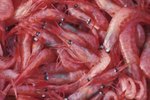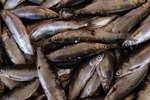
Jewel boxes are mollusks that are members of the family Chamidae, which includes numerous species. Many of them float on their own in the water; others firmly connect themselves to tough and sturdy substrates, although usually not permanently. The majority of these mollusks are in the latter category.
Florida Spiny Jewel Boxes
The shells of spiny jewel boxes (Arcinella cornuta) typically grow to around 1.5 inches. These mollusks have dense and sturdy shells that are rather uneven and asymmetrical in form. The basic coloration of the shells is off-white, although the inside portions often display subtle hints of pink or red. As their names suggest, their shells are covered in lots of somewhat lengthy spikes that serve as defensive adaptations. These spikes keep them safe against certain predators, specifically those of the Naticidae family. As far as meals go, spiny jewel boxes go for filter feeding. The bulk of their diet is made up of wee plankton that they extract from the water.
Caribbean Spiny Jewel Boxes
An organism similar to the Florida spiny jewel box is known as the Caribbean spiny jewel box (Arcinella arcinella). This mollusk has a different geographic scope and lives in parts of the Caribbean and also in South America. Unlike Florida spiny jewel boxes, they inhabit waters of moderate depth. They're also usually a little smaller, with lengths of roughly 1 inch. Their coloration is also different. Caribbean spiny jewel boxes are whitish-yellow. Their inside portions often include slight pinkish-purple coloration.
Corrugate Jewel Boxes
Corrugate jewel boxes (Chama congregata) have pretty broad geographic haunts, which include waters off Bermuda and Brazil. These jewel boxes are also seen in the United States, both in Texas and North Carolina. It isn't uncommon for them to exceed 1 inch in length. They tend to be gray, but with light red blotting. Corrugate jewel boxes generally reside in rugged settings. They frequently connect themselves to pen shells.
Clear Jewel Boxes
Clear jewel boxes (Chama arcana) make their homes on the United States's West Coast, all the way from Southern California up to Oregon. Their shells are typically circular and mainly white, even inside, although exceptions do occur. Clear jewel boxes are drawn to shallow water, where they stick their bodies to rocks.
Leafy Jewel Boxes
Leafy jewel boxes (Chama macerophylla) have shells in lots of different colors, often orange or yellow and sometimes even purple or pink. Their shells are often shiny and luminous in appearance. They tend to spend time in water that is between 3 and 100 feet in depth. These jewel boxes generally grow to no longer than 3 inches.
Smooth-Edged Jewel Boxes
Smooth-edged jewel boxes (Chama sinuosa) are seen in the Caribbean region, and also in southern portions of Florida. These jewel boxes are white, but their inside portions are frequently greenish. They are rather rare mollusks. Coral reefs are their favored habitats.
References
- Calvert County Public Schools: Spiny Jewelbox
- Orlando Sentinel: Spiny Jewel Box Merely Floats Away
- Peterson First Guide to Shells of North America; Jackie Leatherbury Douglass
- Gulf States Marine Fisheries Commission: Florida Spiny Jewelbox [PDF]
- Seashells of North America; R. Tucker Abbott
- A Field Guide to Shells: Atlantic and Gulf Coasts and the West Indies; Percy A. Morris
Resources
Photo Credits
-
Hemera Technologies/Photos.com/Getty Images




